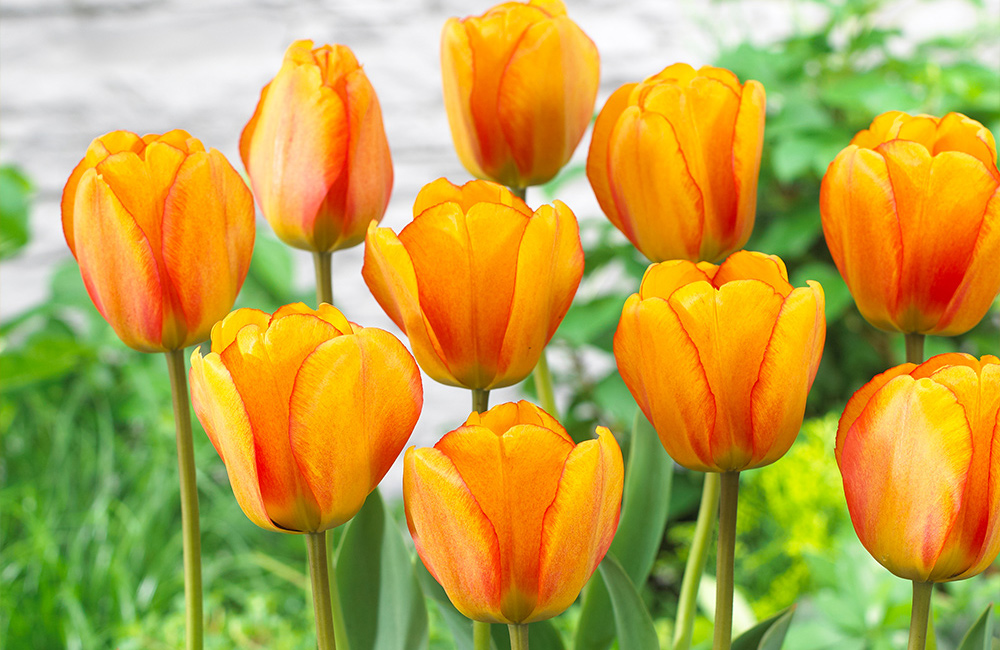Posted by Amber Williams on 24th Jan 2022
The Unique History of Tulip Bulbs

Tulips have been around for centuries, and for many gardeners, they are an integral part of the spring display. The variety they offer to the modern garden is unrivaled, so it’s no surprise to find out that they are among some of the top-rated spring bulbs within the gardening community.
But, did you know that at one point in history they were used as currency? Or that they were so popular that people would steal them from people’s gardens?
Let’s delve into the deep history of tulip bulbs to find out how they grew to fame, why they were so popular, and how they’ve managed to keep their top spot in our gardens even today.
The Origin of the Tulip
Tulips, known for their Netherland roots, actually originated from areas of Central Asia, such as Turkey and Kazakstan. Regarded as a native wildflower, the tulip was still a respected and beloved bloom that was considered a symbol or sign that spring had begun. These flowers could withstand blistering hot weather and sub-zero temperatures in winter, allowing them to reappear each year.
Even the tulip’s botanical name ‘Tulipa’ was derived from the Turkish language.According to tulip lore, sultans would use a single tulip as the finishing touch to their outfits. They would place the tulip in the fold of their turban, which is apparently where the name ‘Tulipa’ originates from.
The Journey from Asia to Europe
One Sultan would give his guests bouquets of tulips whenever they popped round, usually when he held a party. One guest in particular is the reason why the Netherlands are known for their tulip gardens even today.
His good friend, Carolus Clusius, was a French botanist and had a long CV history of working in gardens for emperors.Eventually, he became a professor at Leiden University in the Netherlands, where he planted his first tulip. This was the start of the Dutch tulip industry.
He noticed one day that the people of Leiden were stealing tulips from his garden. Obviously, he wasn’t impressed, but this was just the start of what would soon be known as ‘Tulipomania’.
Tulipomania in the 17th Century
In the late 16th to early 17th century, tulip mania had spread like wildfire in many Dutch towns.It’s important to note that tulips were being grown by rich botanists as it was a fashionable pastime, as the bulbs were hard to come by and extremely expensive.
However, Clusius was among the first to grow tulips in private gardens and was obsessed with tulips in his later life, studying their habits year on year. He was rather taken with the way they seemed to suddenly break. What was once a striking yellow tulip would appear the following spring with red stripes and blotches.
Of course, now we know that this was due to a virus or disease, usually something called ‘Tulip Fire’, but back then Clusius was none the wiser. In fact, these diseased blooms were considered unique – and people paid through the nose to get their hands on them.
Ten Bulbs for One House, please!
The popularity of tulip bulbs got slightly out of hand.Botanists had started to race each other in a game of who can make as many hybrid flowers as possible to get unique markings and shapes. These are now known as ‘cultivars,’ which is how we distinguish the different varieties of tulip today.
Prices for these bulbs soared. At first, botanists were simply giving their cuts and bulbs away to their friends, but as the legend of these striking blemished flowers started to reach people outside their networks, suddenly these botanists were getting requests for their stash. This is when they realised they could sell them to make a profit – which they did.
As the trade for bulbs grew, it allowed the average person to get a bit of the action. It’s said that these bulbs were being sold for ten times the average working man’s salary. Suddenly, not only were the rich able to buy and exchange them for money, but even tradespeople were making some serious cash from their exchanges.
It’s said that at the pinnacle of this tulip boom, the bulbs were worth more than ‘a smart townhouse in Amsterdam’.This is when people realised the value of these bulbs, making exchanges for material items more common. In 1633, fistfuls of bulbs were traded for actual houses. Tulips had started to become a source of income.
The Demise of the Tulip Boom
As if overnight, the demand for tulip bulbs vanished. This was hugely down to the fact that the average person couldn’t afford even the cheapest of tulips, making them inaccessible. Many historians consider this among one of the first financial catastrophes, as it left many in debt which people struggled with for years after.
Even though they were now worth less than a tenth of their normal price, the Dutch never forgot about their love for tulips. It took a few years while the pain of this boom dissipated, but eventually, tulips could be seen in paintings and portraits once again.
Out of the Ashes
Today, the Netherlands are still the world's biggest producer of tulips, selling and exporting over three billion bulbs each year. Staying true to their historic roots, Amsterdam even has a tulip museum that takes you through the rise and fall of the tulip throughout history.
Even though the tulip was worshiped like an Egyptian cat, today they take their rightful place in spring displays across the world. Whether you’re a lover of the classic tulip or prefer something a bit showier, there’s certainly a tulip to suit everyone’s taste thanks to the Dutch!

